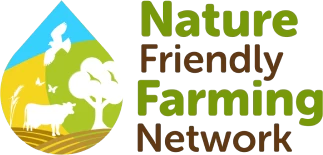Rhodri Lloyd-Williams runs Moelgolomen Farm, a 750-acre upland livestock farm in North Ceredigion in Wales. The introduction and nurturing of semi-natural grasslands has become a key part of Rhodri's nature-friendly approach to farming. Here, he explains how and why he made the move and what the benefits have been.
The basics - why focus on semi-natural grasslands?
"As an organic farm, we used to do a lot of ploughing. We would then reseed our fields with ryegrass, clover and forage rape, and we’d finish the lambs on that. However, we found that within a year or two all the areas we were reseeding were reverting back to natural grasses, such as timothy, cocksfoot, Yorkshire fog and the fescues you’d expect to see on hills like ours.
“We decided to bring in rotational grazing on our lower fields. We left the hilltops as they were, with heather and bilberry, and we also shut off some of the fields for the summer in order to make silage. We subdivided the rest of the farm into smaller paddocks and allowed the stock to rotate through them."
What has the impact of this been?
"We are now definitely seeing more ryegrass come back, and we’ve got a lot more flowering plants. Last summer, I saw a carpet of orchids in one field. Everything gets more opportunity to grow, flower and seed, resulting in much more plant diversity.
"Overall we’re definitely seeing better growth and deeper roots. By mid- to late summer, we’ve built up a good wedge of grass, whereas a few years ago, with set stocking, it would have been grazed down to the roots.
“We’ve tried to let the seed bank in the soil regenerate naturally, but last year I sowed a herbal ley mix on a field that wasn’t looking too good. We also scratched up the soil in our silage fields and broadcast seeds on top. This seemed to open up the sward, and the seeds did well. I’m happy to try a mixture of approaches to see what works."
How has it impacted the farm business?
"The diverse swards mean the summer growth rates for our lambs have improved. We also have lots of birds of prey around the farm, and I always think that having apex predators means you’re getting the whole ecosystem right beneath them.
“From a business perspective, the biggest change has been cutting out the ploughing costs. Before, it felt like I was just handing my profits straight over to contractors. We’ve also managed to roughly halve our bill for bought-in sheep feed. My aim was to bring input costs down to a level where whatever I got from my lamb cheque would translate into more profit.”


